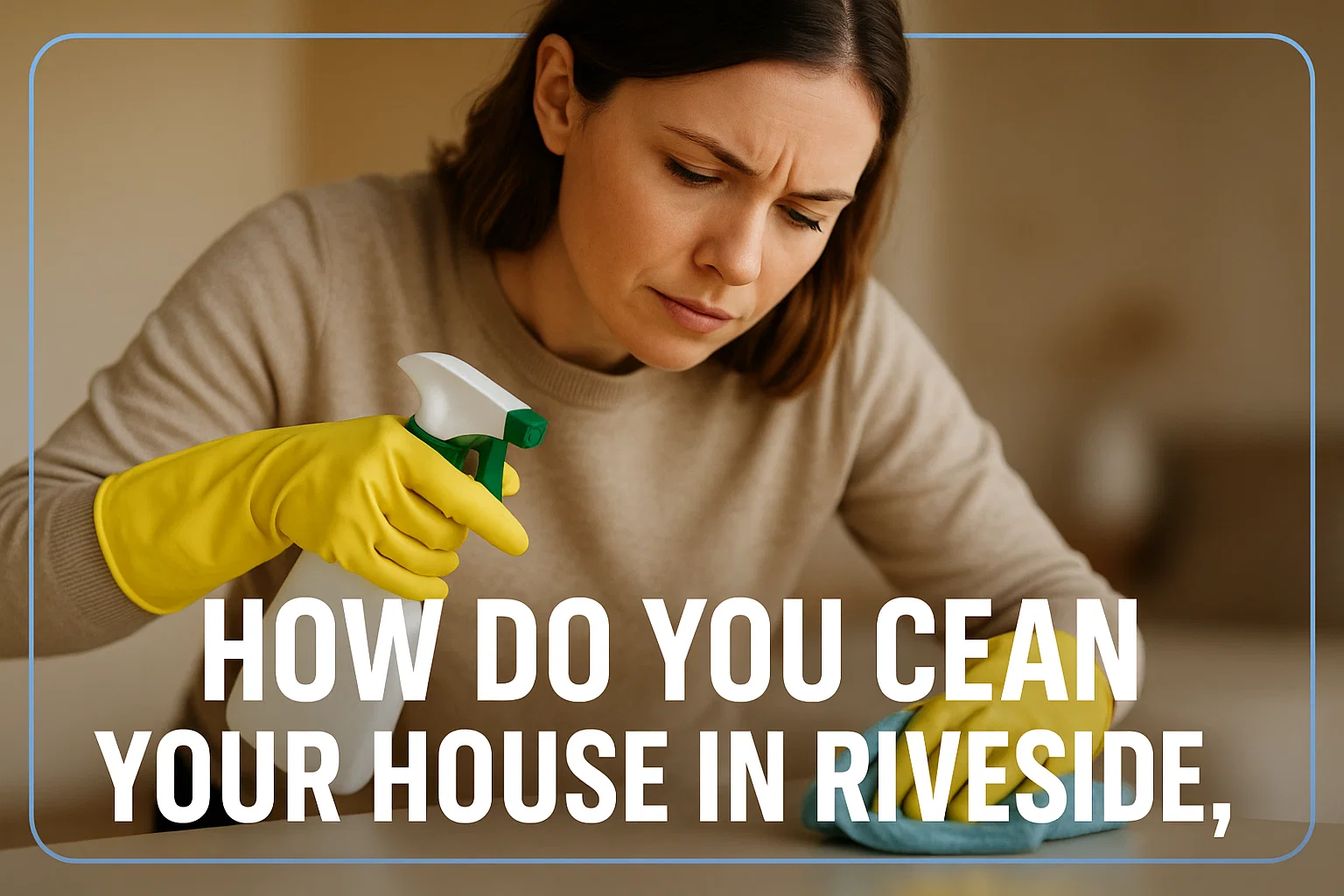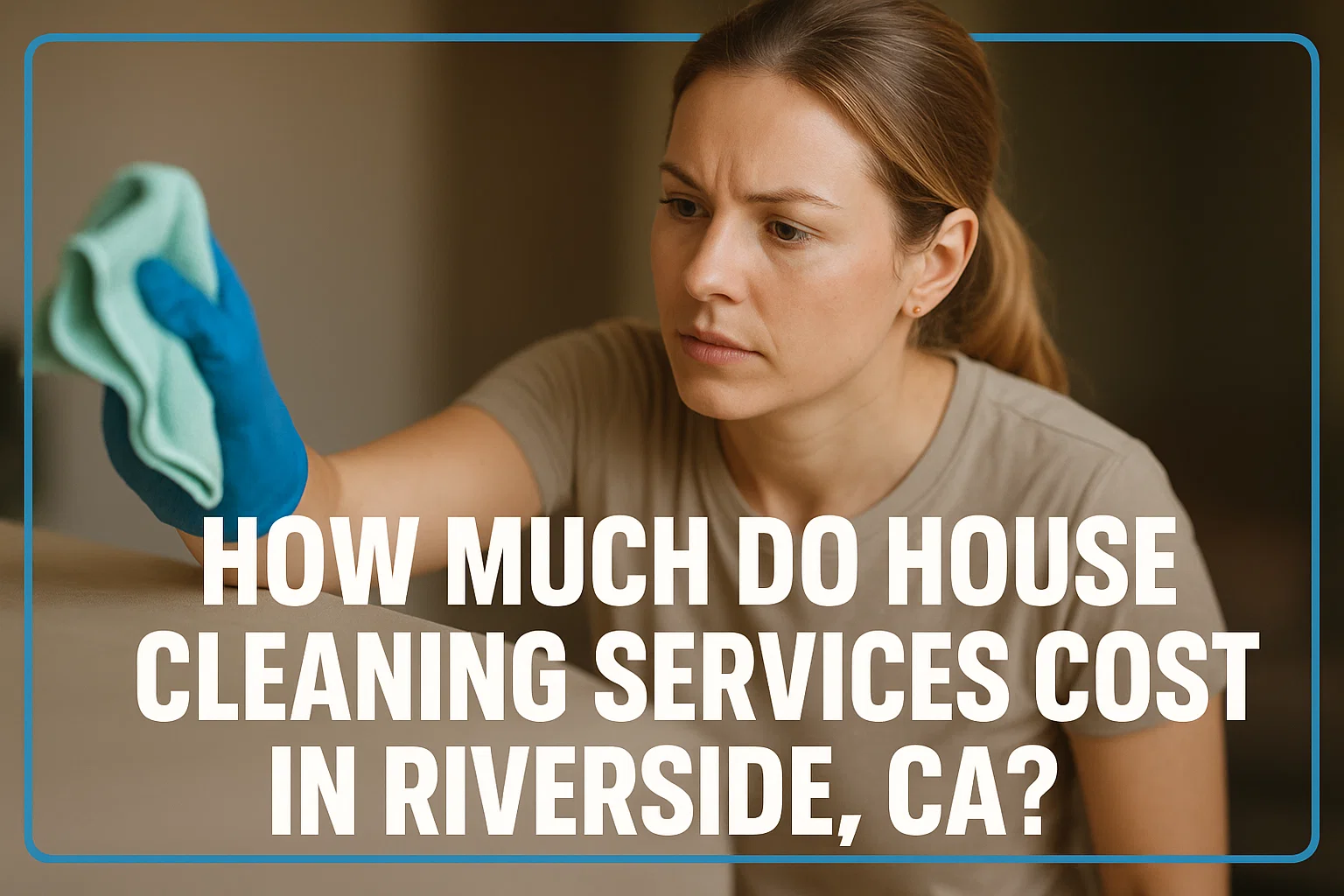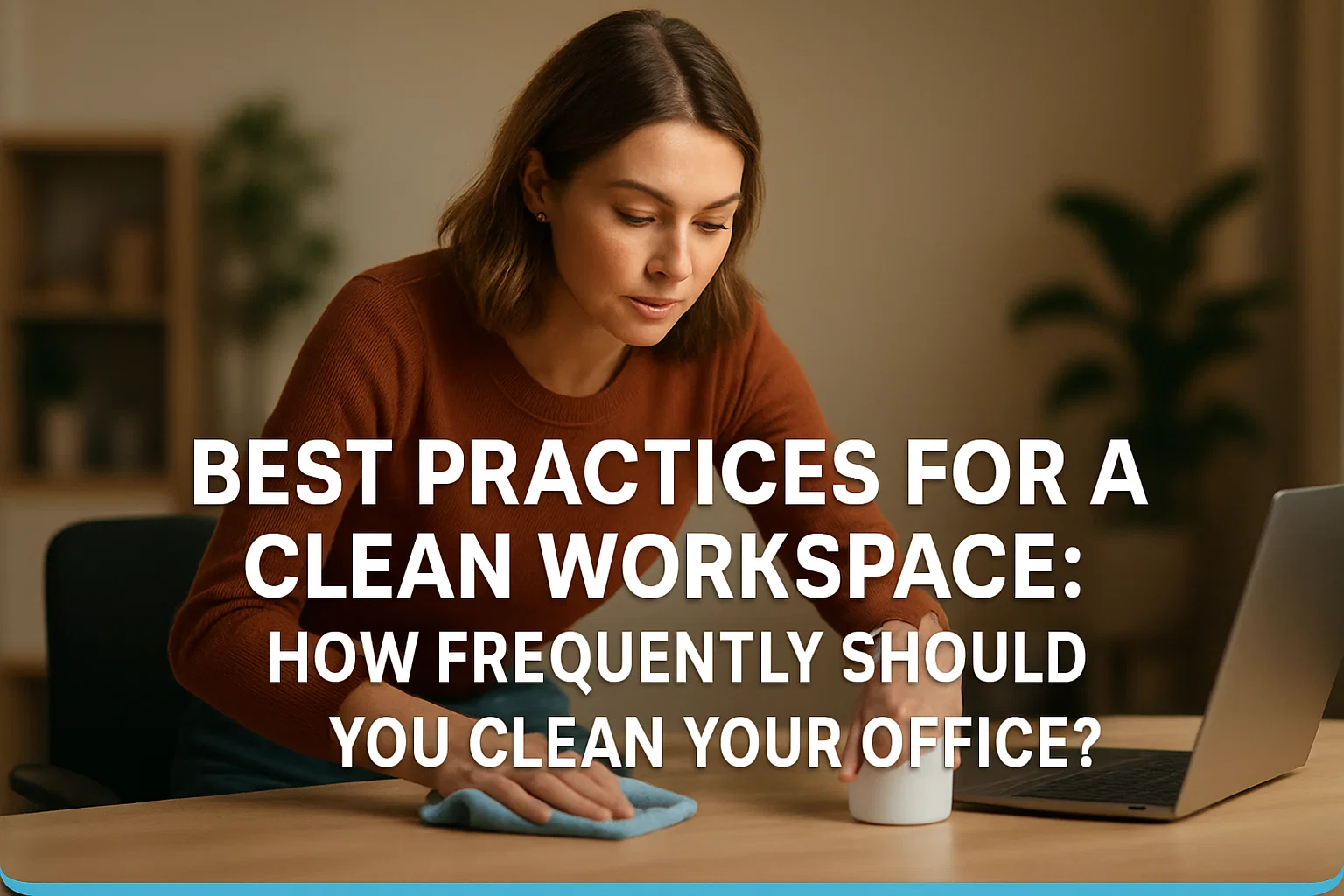Have you ever entered a workplace and you are immediately fresher and energized? It is the magic of a tidy working place. A clean office is more than good looks; it is healthier, happier, and more productive to all. Cleanliness is a game-changer; it helps in employee morale, client impression, and many more. The question is, however, best practices for a clean workspace: how frequently should you clean your office?
In this guide, we will provide professional advice, realistic timelines, and best practices when it comes to a clean workspace. These strategies will ensure you have a sparkling space throughout the year whether you own a small startup or a corporate office that is always busy.
Why Is a Clean Workspace Essential?
A clean office has direct effects on the health, motivation, and efficiency of your employees. Unclean desks, garbage cans that are about to burst, and dirty bathrooms may be distracting and even harmful. On the other hand, a clean space will help in concentration, minimize the rate of disease transmission, and boost the reputation of your brand.
Health and Safety
There is a high level of germs in offices. Sharing of keyboards, door handles, and break rooms can readily become the hotbeds of bacteria. Routine cleaning will reduce the chances of colds, flu, and other contagious diseases, so that your team can be healthy and present.
Professional Appearance
What counts is first impressions. When a client or a job applicant enters a clean and well-taken care of office, it tells a lot about how professional and attention to detail.
Productivity and Morale
Disorder is brought about by clutter. A cluttered workplace is a stressor and makes it harder to concentrate, whereas a clean and well-organized office encourages workers to be productive and remain motivated.
How Frequently Should You Clean Your Office?
| Area | Cleaning Frequency | Notes |
| Reception/Lobby | Daily | High traffic, first impressions |
| Desk Surfaces | Daily/Weekly | More frequent in shared or hot desk scenarios |
| Restrooms | Daily | Multiple checks per day for busy buildings |
| Kitchen/Breakroom | Daily | Prevents odors and pests |
| Carpets/Floors | Weekly/As Needed | More often with heavy use; spot clean spills instantly |
| Windows/Glass | Weekly/Monthly | Adjust based on weather and local dust/pollution |
| Air Vents | Seasonally | Helps air quality, especially during allergy season |
| Electronics | Weekly | Prevents germ buildup |
Best Practices for a Clean Workspace
The office clean and orderly does not happen by itself but requires drive, perseverance and the involvement of all in the office. Whether it is a small company or a big organization, the following are the best practices for a clean workspace that will guide you through healthy, productive and professional environment all year.
1. Create a Clear and Custom Cleaning Checklist
The initial phase in ensuring that a working environment is kept clean is to have a strategy. Prepare a cleaning checklist that is specific to your office in terms of its layout, the number of employees that work there, and the foot traffic there on a daily basis. Divide your tasks into daily, weekly, and monthly routines, and nothing comes short. For example:
- Daily: Clean out waste bins, clean desks and frequently touched surfaces, refill bathrooms
- Weekly: Shelves, Carpets, hard floors: dust, vacuum, mop
- Monthly: Wash windows, thoroughly clean appliances, supply room organization
Putting this checklist up in a place where everyone can view it will hold everyone responsible and make everyone on the same page.
2. Encourage Employee Participation
Employees should have their areas even though the cleaning is done professionally. Ask your workers to take a few minutes per day at the end of the day and:
- Clean up around their desks
- Clean down individual desks
- Rinse their dishes in the breakrooms
- Dispose of disposable and recyclable material properly
That not only takes a part of the burden off the cleaning personnel, but also sets the tone of respect and professionalism.
3. Use Safe and Effective Cleaning Products
The type of cleaning substances that you use is as important as the frequency of cleaning. Use non-toxic and eco-friendly supplies in common areas. The toxic chemicals may result in breathing difficulties and allergic reactions. Green products are equally efficient and very safe for both the employees and the environment. On top of that, they give your company a good direction of being sustainable.
4. Schedule Regular Professional Cleaning
Although the everyday cleaning may be covered internally, professional cleaning is necessary to ensure longer periods of cleanliness. At least once a week, you should arrange regular cleanings of:
- Upholstery cleaning and carpet cleaning
- Floor polishing or waxing
- Window washing
- Restroom sanitation
- Vent cleaning and HVAC
Professional cleaners are equipped and trained to access areas that the employees may fail to notice hence your working environment will also be in good condition.
5. Maintain Indoor Air Quality
Clean space is not only meant to keep the surfaces clean, but there is also the air quality that contributes much to comfort and health. Unpleasant odors, allergens, and dust can be spread by poor ventilation and dusty HVAC systems. In an attempt to clean up the air, think about:
- Opening windows in favorable weather conditions
- Using HEPA-filter air cleaners in public places
- HVAC Maintenance and cleaning of HVAC Regular Cleaning and maintenance of HVAC
- Through the addition of indoor plants to the environment, natural air filtering can be obtained.
Fresh and clean air will increase the concentration level and reduce the risks of strokes, allergies, and tiredness among employees.
6. Disinfect Shared Devices and Equipment
Most offices share certain tools such as phones, keyboards, printers, and conference room equipment-tools used all day long-and considered hotbeds of germs. Keep such high-touch items clean, especially during flu season (and beyond):
- Cleaned using disinfecting wipes at least once in a day
- Marked with a post use cleaning instruction label
- With hand sanitiser dispensers nearby
This small habit can significantly reduce the spread of illness in your office.
7. Prioritize Restrooms and Breakrooms
Restrooms and breakrooms are two spots that will soon become unhealthy when they are not taken care of. These areas experience a lot of traffic on daily basis and are supposed to be cleaned severally in a day where possible. The best practices concern:
- Cleaning up counter tops, sinks and handles on a routine basis
- Restocking soap, paper towels and toilet paper are constant
- Daily cleaning up the microwaves, fridges and tables in break areas
- Bringing out the garbage and recycles them before they start spilling.
Odor-free, well-stocked and clean shared spaces demonstrate to the employees that their comfort and health are a priority.
Office Cleaning Frequency Guide
Different areas of the offices demand varying attention. To start with, here are the examples of how frequently each area of your office should be cleaned:
Daily Cleaning Tasks
Reception & Common Areas
- Trash and recycling bins are free of garbage.
- Clean door handles, surfaces, and doors.
- Floor sweep or mop.
Kitchens & Breakrooms
- Clean up the dishes, wipe the counters, and the tables.
- Refrigerator: look at old food.
- Restock soap, sanitizer, and paper towel.
Restrooms
- Unblemished bathrooms, wash basins, mirrors.
- Replace the toilet paper and soap.
- Clean all the surfaces.
Weekly Office Cleaning Tasks
- Free of dust all the floors, desks, shelves, and window sills
- Hard floor mop
- Scrub appliances in the kitchen (microwave, fridge outside)
- Restock clean and kitchen products
- Spot clean carpets
Monthly Cleaning Tasks
- Office windows, inside and out
- Carpeted spaces – deep clean Deep-clean areas
- Clean baseboard and vents
- Clean offices and office chairs sterilize upholstery
How to Choose a Professional Office Cleaning Service
In case your business can afford hiring expert Commercial Services, it is important to choose the right cleaning key.
Look for Experience and Reviews
Select a cleaning company that is well-reputed and with prior experience in the office environment.
Verify Insurance and Certifications
Make sure they are insured and are industry standard. This protect your company against accidents or damage.
Ask About Customization
Each of the offices is unique. Ensure that such a company has customizable solutions that depend on your needs.
Eco-Friendly Practices
Enquire whether they are using green cleaning products and sustainability. This is healthier both for your team and the environment.
Conclusion
There is no such thing as unnecessary investment in cleanliness, as it is a core of any professional, healthy, and effective working environment. The Best Practices to implementing a Clean Workspace, ensuring that cleaning frequencies are realistic, and staff actively participate will ensure your business is fresh, welcoming, and functional.
Give your office a clean start. Next Gen Cleaning Service does it clean, keeps it simple and easy to the beholder. We will clean up so you can be happier, healthier in your working environment.
FAQ’s
Professional cleaning would be beneficial in most offices at least once per week, more extensive cleaning should be done once per month or quarter, depending on how often the office is used
Shared electronics (such as keyboards, phones, printers, etc.) are often ignored. These are the high-touch items that ought to be cleaned frequently to minimise the spread of germs.
To ensure that cleanliness is maintained between sessions of cleaning, a minimal routine of cleaning, provision of sanitizing products, and the promotion of regular desk cleaning should be established.
You can afford to employ professional cleaning services; this can go a long way in cleaning up, especially weekly or monthly. They are involved in the cleaning tasks that are mostly ignored.
Yes. Green cleaning products not only work well, but they are safer for employees and the environment. They are also very favorable when it comes to offices seeking to find a way of minimizing the use of harsh chemicals.






